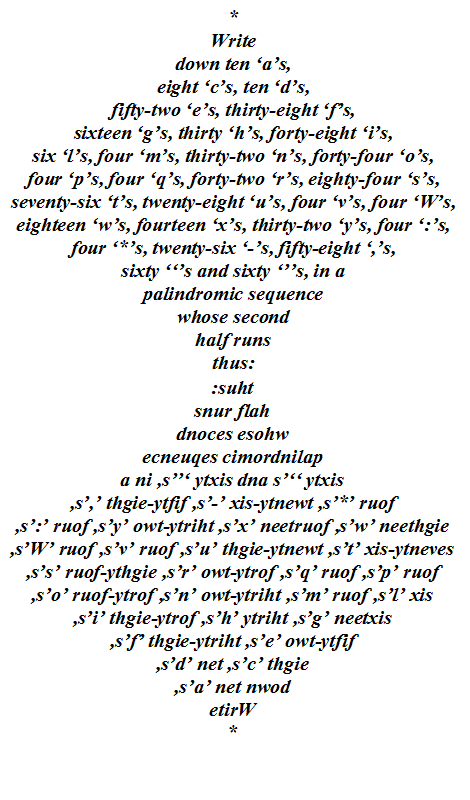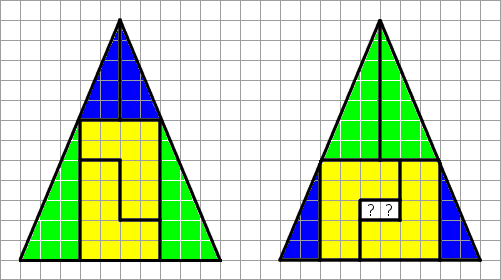
Science & Math
“A Positive Reminder”
A carpenter named Charlie Bratticks,
Who had a taste for mathematics,
One summer Tuesday, just for fun,
Made a wooden cube side minus one.
Though this to you may well seem wrong,
He made it minus one foot long,
Which meant (I hope your brains aren’t frothing)
Its length was one foot less than nothing,
Its width the same (you’re not asleep?)
And likewise minus one foot deep;
Giving, when multiplied (be solemn!),
Minus one cubic foot of volume.
With sweating brow this cube he sawed
Through areas of solid board;
For though each cut had minus length,
Minus times minus sapped his strength.
A second cube he made, but thus:
This time each one-foot length was plus:
Meaning of course that here one put
For volume, plus one cubic foot.
So now he had, just for his sins,
Two cubes as like as deviant twins:
And feeling one should know the worst,
He placed the second in the first.
One plus, one minus — there’s no doubt
The edges simply canceled out;
So did the volume, nothing gained;
Only the surfaces remained.
Well may you open wide your eyes,
For those were now of double size,
On something which, thanks to his skill,
Took up no room and measured nil.
From solid ebony he’d cut
These bulky cubic objects, but
All that remained was now a thin
Black sharply-angled sort of skin
Of twelve square feet — which though not small,
Weighed nothing, filled no space at all.
It stands there yet on Charlie’s floor;
He can’t think what to use it for!
— J.A. Lindon
All the News …
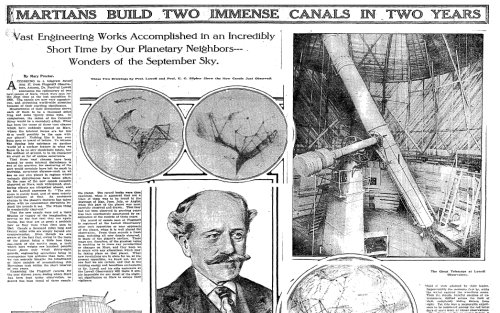
How’s that for a headline? It ran in the New York Times Sunday magazine on Aug. 27, 1911:
Canals a thousand miles long and twenty miles wide are simply beyond our comprehension. Even though we are aware of the fact that … a rock which here weighs one hundred pounds would there only weigh thirty-eight pounds, engineering operations being in consequence less arduous than here, yet we can scarcely imagine the inhabitants of Mars capable of accomplishing this Herculean task within the short interval of two years.
The Times was relying on Percival Lowell, who was convinced that a dying Martian civilization was struggling to reach the planet’s ice caps. “The whole thing is wonderfully clear-cut,” he’d told the newspaper — but he was already largely ostracized by skeptical colleagues who couldn’t duplicate his findings. The “spokes” he later saw on Venus may have been blood vessels in his own eye.
Whatever his shortcomings, Lowell’s passions led to some significant accomplishments, including Lowell Observatory and the discovery of Pluto 14 years after his death. “Science,” wrote Emerson, “does not know its debt to imagination.”
Palingram
A self-reproducing sentence by Lee Sallows — “Doing what it tells you to do yields a replica of itself”:
This reminds me of a short short story by Fredric Brown:
THE END
Professor Jones had been working on time theory for many years.
“And I have found the key equation,” he told his daughter one day. “Time is a field. This machine I have made can manipulate, even reverse, that field.”
Pushing a button as he spoke, he said, “This should make time run backward run time make should this,” said he, spoke he as button a pushing.
“Field that, reverse even, manipulate can made have I machine this. Field a is time.” Day one daughter his told he, “Equation key the found have I and.”
Years many for theory time on working been had Jones Professor.
END THE
Second Chances
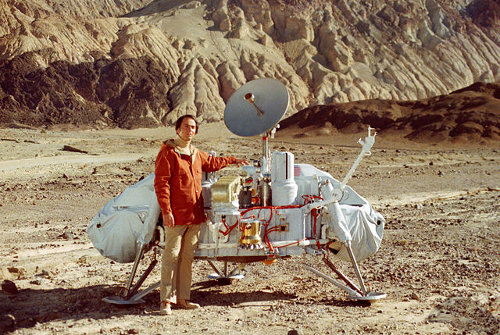
In science it often happens that scientists say, ‘You know, that’s a really good argument; my position is mistaken,’ and then they would actually change their minds and you never hear that old view from them again. They really do it. It doesn’t happen as often as it should, because scientists are human and change is sometimes painful. But it happens every day. I cannot recall the last time something like that happened in politics or religion.
— Carl Sagan, in a 1987 address, quoted in Jon Fripp et al., Speaking of Science, 2000
To Whom It May Concern
On Jan. 9, 1793, two astonished farmers in Woodbury, N.J., watched a strange craft descend from the sky into their field. An excited Frenchman greeted them in broken English and gave them swigs of wine from a bottle. Unable to make himself understood, he finally presented a document:
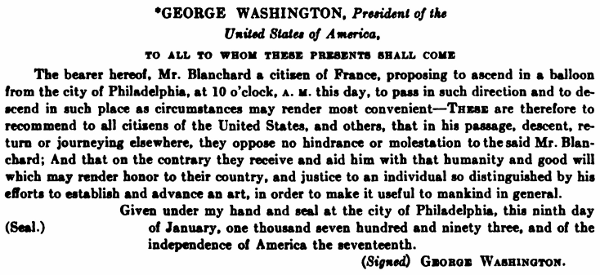
The farmers helped the man fold his craft and load it onto a wagon for the trip back to Philadelphia. Before leaving, the Frenchman asked them to certify the time and place of his arrival. These details were important — he was Jean-Pierre Blanchard, and he had just completed the first balloon flight in North America.
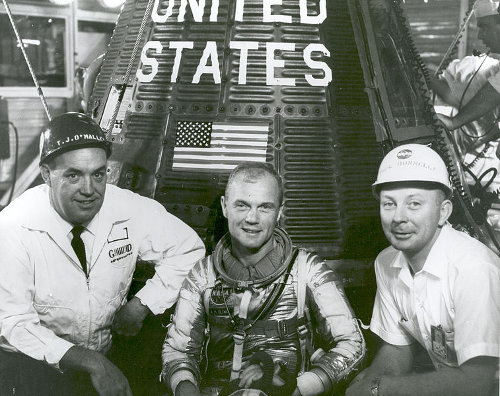
One hundred sixty-nine years later, when John Glenn went into orbit aboard Friendship 7 in 1962, mission planners weren’t certain where he’d come down. The most likely sites were Australia, the Atlantic Ocean, and New Guinea, but it might be 72 hours before he could be picked up.
Glenn worried about spending three days among aborigines who had seen a silver man emerge from “a big parachute with a little capsule on the end,” so he took with him a short speech rendered phonetically in several languages. It read:
“I am a stranger. I come in peace. Take me to your leader, and there will be a massive reward for you in eternity.”
Three Theorems
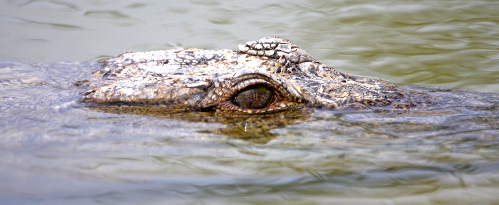
Theorem 1. A crocodile is longer than it is wide.
Proof. A crocodile is long on the top and bottom, but it is green only on the top; therefore a crocodile is longer than it is green. A crocodile is green along both its length and width, but it is wide only along its width; hence a crocodile is greener than it is wide. Therefore a crocodile is longer than it is wide.
Theorem 2. Napoleon was a poor general.
Proof. Most men have an even number of arms. Napoleon was warned that Wellington would meet him at Waterloo. To be forewarned is to be forearmed. But four arms is a very odd number of arms for a man. The only number that is both even and odd is infinity. Therefore, Napoleon had an infinite number of arms in his battle against Wellington. A general who loses a battle despite having an infinite number of arms is very poor general.
Theorem 3. If 1/0 = ∞, then 1/∞ = 0.
Proof. Given:

Rotate both sides 90° counterclockwise:
![]()
Subtract 8 from both sides:
![]()
Now reverse the rotation:
![]()
Borromean Tribars
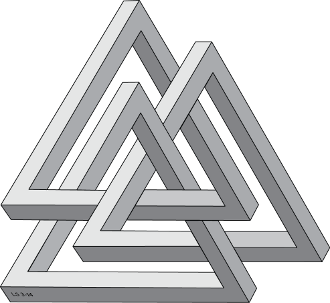
Only the brilliantly inventive Lee Sallows would think of this. The figure above combines Penrose triangles with Borromean rings: Each of the triangles is an impossible object, and they’re united in a perplexing way — although the three are linked together, no two are linked.
(Thanks, Lee.)
Working Afield
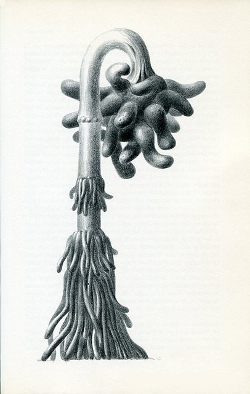
Dutch author Leo Lionni devoted most of his career to children’s books, but in 1977 he undertook a weird experiment. Parallel Botany is a catalog of made-up plants, whose made-up features are described by made-up botanists and illustrated by Lionni’s pencil drawings. Sigurya barbulata, at left, is distinguished by its crowning “cephalocarpus”; a specimen discovered in a Mexican pyramid was found to have been metallized into an organic mace, but how this had come about is the subject of “furious debates.”
“The difficulties of applying traditional methods of research to the study of parallel botany stem chiefly from the matterlessness of the plants,” Lionni wrote. “Deprived as they are of any real organs or tissues, their character would be completely indefinable if it were not for the fact that parallel botany is nonetheless botany, and as such it reflects, even if somewhat distantly, many of the most evident features of normal plants.”
Why do all this? Lionni closes with a quote by the made-up Swedish philosopher Erud Kronengaard: “There are two kinds of men, those who are capable of wonder and those who are not. I hope to God that it is the first who will forge our destiny.”
Alison’s Triangle
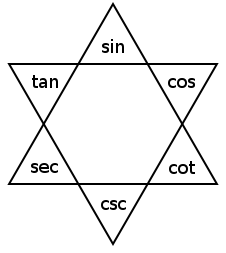
I’m not sure who came up with this — this simple diagram reflects all possible true trigonometric identities of the form x ÷ y = z or x × y = z, where x, y, and z are the basic trigonometric functions of the same angle t.
For any three neighboring functions on the perimeter of the star, the product of the ends always equals the middle (e.g., tan t × cos t = sin t) and the middle function divided by one of the end functions is equal to the other end function (e.g., sin t ÷ tan t = cos t and sin t ÷ cos t = tan t). If you memorize the diagram you can reel off a list of 18 simple relations.
I found it in Michael Stueben’s Twenty Years Before the Blackboard, 1998.

